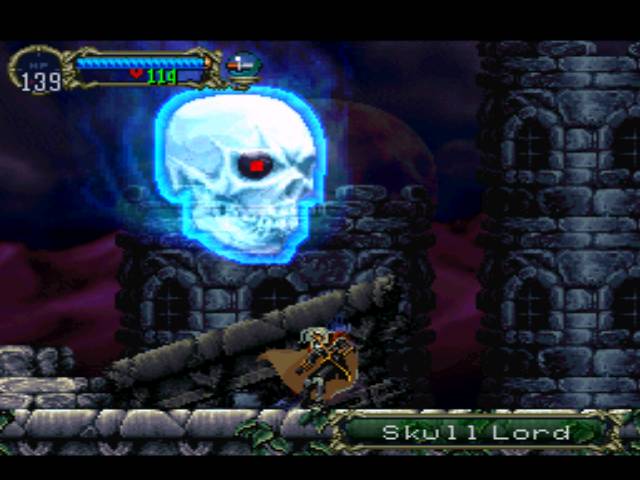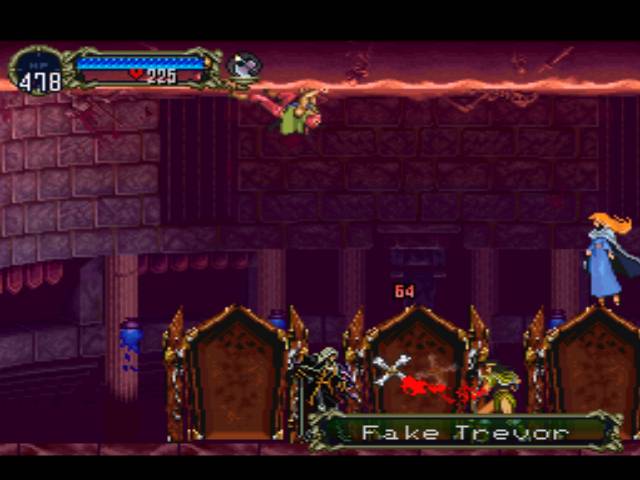When Derek Lavigne asked the community to play an old game this month and write about it, my initial response was guarded and uncertain. I loved the idea, of course, but this is December! This is the time of year when the number of video games available to play is at its peak. I’ve sitting on four or five brand-new games that I’ve yet to make any headway in at all, and you want me to dig up an old game I’ve already played? That’s not nostalgic, that’s sacrilege.
Giving the matter a second thought, I realized two things. One, forcing me to put aside all the latest releases and dive into one from the past was exactly the point of the exercise. Two, he was actually giving me the perfect excuse to play Castlevania: Symphony of the Night again – this time, in Japanese.
As I mentioned in my piece about Super Potato and the perils of digital distribution, I bought Symphony of the Night again last summer purely on a whim. I found it used for a reasonable price (albeit one higher than the XBLA/PSN version) and holding it in my hands just felt right. The excuse I told myself at the time was “Now I can see what the Japanese version is like.” I promptly stuck on my bookshelf and all but forgot about it until I read Derek’s appeal.
I’m pleased to report that the game is just as exciting as it ever was. Despite six derivative Castlevanias on the portable Nintendo systems, the original Symphony of the Night is a rock-solid action platformer with charm and depth to spare. The game doesn’t just look great or sound great, it is great and it hasn’t aged a day. How many PlayStation One games can you say that about?
If you’ve never played Symphony of the Night, I envy you. This adventure is a like a time capsule, a trip back to an era where games actually expected you to find your own way, so the designers had to arrange the levels to serve as both an obstacle course and as a subtle chute towards the goal. They leave bread crumbs in the form of conversations with other characters that you encounter as you explore the castle.
Running into another person is your clue that you’re on the right track, at least as far as the story is concerned, but the castle is big enough that some areas and rooms serve no purpose other than to reward those who find it. In the chapel there’s a confessional with empty chairs on either side. Sit down on one side and a ghostly priest will absolve you of your sins and refill your magic meter. Sit down in his chair and a ghost will take the other and tearfully beg for forgiveness – or stab you in the face.
There’s a lot to love here, but if I had to pick my favorite element it would the boss battles. They vary wildly in size and scope but each one is unique. Legion is a sight to behold: a massive sphere of bodies which shamble towards you when knocked loose from the whole. Many of these encounters are nods to previous games. At one point, Alucard faces off against zombie versions of Trevor, Grant and Sypha, his three allies in Castlevania III. It’s actually a tragic encounter, a reminder to the player that Alucard’s immortality means he will watch all his human friends die someday.
As far as my experience with the Japanese goes, so far the game is largely the same. Managing my equipment is a little bit trickier, but the menus clearly indicate how an item will affect my stats. It does accentuate the confusion of having weapons and one-time use items in the same menu, as that screen quickly became a total mess. I can’t say I understand all of the dialogue but the infamous “miserable little pile of secrets” line is nowhere to be seen. The acting is just as melodramatic as ever, but that’s par for the course in this country. At least Dracula is played by veteran performer Norio Wakamoto (Cowboy Bebop fans might remember him as Vicious).
I’m not going to have time to finish the game this month simply because my family, other games and a two-week vacation to the United States cannot be ignored. But I must thank Derek Lavigne for issuing this challenge and allowing me to reconnect with one of my favorite games. If you’d like to return to Castlevania or even make your first visit, the game couldn’t be more accessible: not only will PS1 games work in any PS2 or PS3, the game is available digitally over PSN and XBLA and it’s included as an unlockable in Castlevania: The Dracula X Chronicles on PSP (which itself is now available as a direct download). Nintendo owners may be out of luck, but there’s always those aforementioned portable spin-offs, most of which I recommend (particularly the DS games).
Daniel Feit was born in New York but now lives in Japan. Follow him on Twitter @feitclub or visit his blog, feitclub.com
VentureBeat's mission is to be a digital town square for technical decision-makers to gain knowledge about transformative enterprise technology and transact. Learn More


